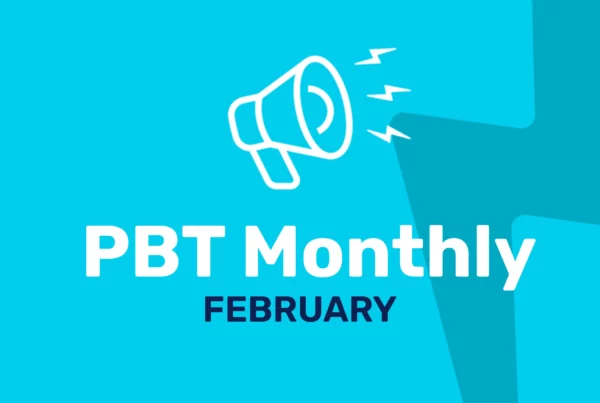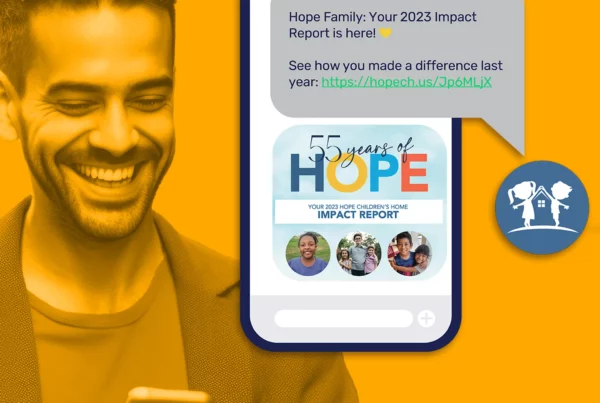
Adapt your communication strategy with texting
Communication is evolving. Organizations have to learn how to communicate and reach people with texting. We’ve seen this texting trend grow in recent years.
Do you remember the early seasons of American Idol? If you do, it’s likely that the first thing you remember is the people whose only talent was no talent. However, each season there were always a few talented people who would stand out and move through the competition. Sitting on your couch as an American Idol viewer, you were encouraged to call in your vote to determine who deserved to move to the next round.
In the season one finale, 15.5 million votes were cast by phone. Between season one and two, American Idol landed AT&T as a sponsor. AT&T donated 7.5 million text messages to encourage voting via SMS. With text voting in place, the season two finale generated 24 million votes cast by viewers.
By season 12, more people voted on American Idol than in the 2012 presidential election (132 million to 122 million respectively). As American Idol grew in its popularity, the show was adapting how they communicated with their audience. The progression to texting encouraged audience participation and they saw this participation skyrocket. This American Idol use case was a microcosm demonstrating what happens when you reach people with texting.
Create the texting bridge people prefer.
When people are contacted, they overwhelmingly prefer text. The proof is how people respond to texting and what they have told us about their preferences.
It’s clear that people prefer receiving text messages and have conditioned themselves to read their text messages. Paired with that, in 2012, only 11% of web traffic was on mobile devices. By 2022, mobile device web traffic had skyrocketed to 57%, surging past desktop devices in utilization.
This combination has created a paradigm shift where people expect a self-service experience on their mobile devices. There has to be a bridge between people’s phones and your mobile-optimized digital content.
That bridge is texting.
It has become a best practice for nonprofits and ministries to tell their story online in a mobile-optimized way and reach their people with the content via text messages. It is no longer a question of “if”, but rather “how” you utilize texting to reach your people.
The benefits of texting create exciting possibilities
Increase Engagement
You are much more likely to increase your engagement with your community when you reach people with texting. Your audience receives your intended messages, reads and then responds at a much higher rate than with any other digital media.
Encourage Retention
Personal and timely support is crucial when ensuring that your audience knows you care for them. Texting is the best way to support your people when they need it. Additional texting features, like two-way texting, provide avenues by which your texting service can help to retain and support community members.
Optimize Interaction
Texting gives you a vast array of ways to reach your people. Tools like live Q&A during events or sending videos with Multimedia Messaging Service (MMS) help to clarify and maximize communication with your audience.
Reduce Conventional Costs
Commit to a reduction strategy for paper, printing and postage costs. Transitioning to digital content, using text as your delivery engine, will provide a low-cost alternative with a more accurate and higher return on your investment.
Your Texting Company Matters
With the widespread use of texting growing, texting companies are popping up all over the place. However, not all companies are equal. Some companies will point to the benefits of texting, but not provide the guidance you need when it’s time to implement texting into your communication. Ultimately, what you need is not just a software service, but a partner who can guide you along the way to maximize the benefits of mass texting while making sure you avoid any pitfalls.
When choosing a texting service, there are 3 issues that you should consider:
1. Company values matter.
The first issue to consider is whether or not the company values align with the unique values of your organization. Many companies are just looking to financially capitalize on mass texting. They’ll cut corners to cut costs at the expense of their clients. Sometimes the corners that are cut may affect the integrity of your organization.
For example, there are different types of delivery with texting. One way is using short codes, which are 5 or 6 digit numbers that your recipients see when you text them (i.e. “Text HELLO to 12345”). Short codes are the best way to improve brand identification and build trust as well as avoid getting tagged as SPAM by cell carriers. Some companies will offer you a short code at a highly discounted rate because it is a “shared short code”. This means you share the short code with multiple organizations, eliminating all of the aforementioned benefits of a short code. Shared short codes are not endorsed by cell carriers.
A DEDICATED short code is unique to your organization. When someone interacts with your short code, they recognize that it’s you and can trust they’re getting a message from the organization they’ve opted to receive communication from.
This is just one example of why you need to choose a company who doesn’t cut corners for their benefit. You need to choose a texting company who cares more about the integrity of your nonprofit than its bottom line.
2. There is “a” way to do it and there is the “BEST” way to do it.
Another issue to consider is whether or not the company will deliver your messages with accuracy and efficiency. The way in which you deliver your message matters and we’ve established that the best delivery method is texting. But what you say and when you say it matters too. Engage a texting software company that doesn’t just turn on your account and hope you figure it out. Partner with one that understands best practices and tailors a texting strategy based on your requirements.
3. Partner with industry experts.
This very important issue relates to compliance and legal issues in sending text messages. Most of us at this point have probably received a text message that we didn’t want to receive and from a sender we didn’t authorize.
The carriers have heavily weighed in on this subject. They’re not going to allow what happened with email spam to happen with texting. The same laws for commercial business are applicable to nonprofits. There can be hefty penalties so you want to be sure the company you choose is an expert in navigating the laws and best practices of texting.
Start Adapting Your Strategy With Texting
Implementing texting as the communication centerpiece of your organization is not the future; it is now.
As nonprofits and ministries, when you create mobile-optimized digital content and then use texting to reach your people, the responses will come faster, will be more frequent and will be delivered with greater accuracy. This fosters growth and a deeper sense of community.
It is not a question of should you utilize texting, but rather who should you trust for your texting strategy.




